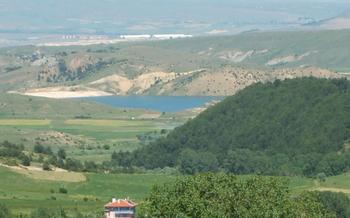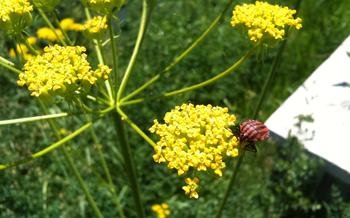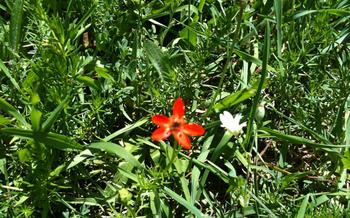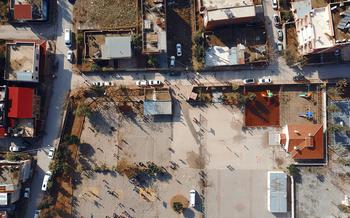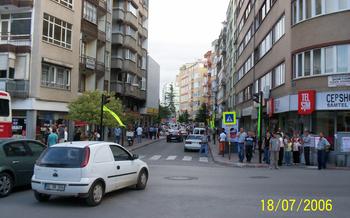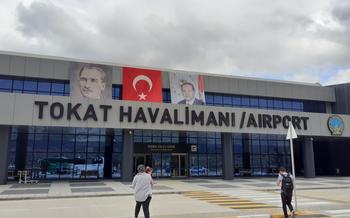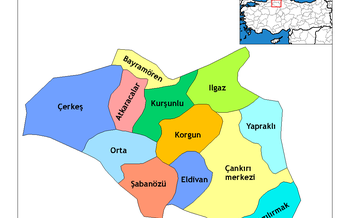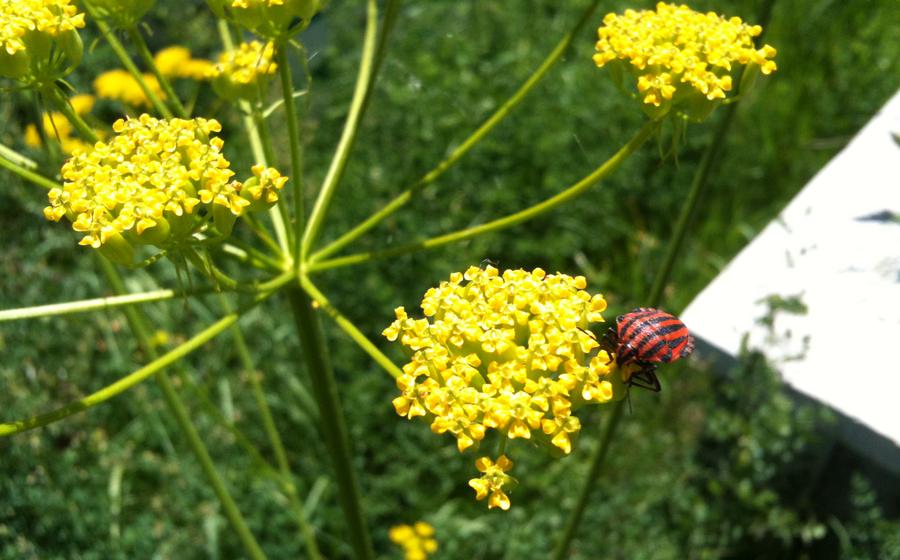
Hacı Murad ı Veli Mosque
- History of the Hacı Murad ı Veli Mosque
- Location and Accessibility
- Architectural Highlights
- The Significance of the Mosque
- Explore Nearby Attractions
- The Minaret: A Symbol of Faith and Community
- Majestic Structure and Architectural Significance
- The Purpose and Significance of Minarets
- Symbolic Representation and Spiritual Connection
- The Call to Prayer and its Impact
- Religious Rituals and Practices
- Inside the Mosque
- The Courtyard and Ablution Area
- Local Culture and Traditions
- Photography and Videography
- Interfaith Dialogue and Understanding
- Local Crafts and Artisans:
- Insider Tip: Unveiling Hidden Gems and Local Delights
History of the Hacı Murad ı Veli Mosque
Established in the 14th century, the Hacı Murad ı Veli Mosque holds a prominent position in the annals of Çankırı, Turkey. Erected under the auspices of the Candaroğulları dynasty, this architectural marvel stands as a testament to their enduring legacy and unwavering faith. Blending Seljuk and Ottoman architectural influences, the mosque boasts a distinctive style that captivates visitors with its intricate details and harmonious proportions. Its construction marked a significant milestone in the city's history, solidifying its status as a vibrant center of Islamic worship and community life.
The mosque derives its name from the revered Hacı Murad ı Veli, a Sufi saint widely esteemed for his piety and spiritual wisdom. His tomb, located within the mosque's premises, serves as a pilgrimage site for devotees seeking blessings and guidance. Over the centuries, the mosque has served as a hub for religious gatherings, fostering a deep sense of community and spiritual connection among the local populace. Its enduring significance as a place of worship and cultural heritage makes it a must-visit destination for those seeking a deeper understanding of Çankırı's rich Islamic traditions.
Location and Accessibility
The Hacı Murad ı Veli Mosque is situated in the heart of Çankırı, a city in the Central Anatolia region of Turkey. It is conveniently located within the city center, making it easily accessible on foot or by public transportation. Visitors can take a leisurely stroll through the charming streets to reach the mosque, admiring the historical architecture and vibrant atmosphere.
For those arriving by car, there are designated parking areas within walking distance of the mosque. However, it is essential to be mindful of any parking restrictions or regulations in the vicinity. Visitors can also opt for taxis or ride-sharing services to reach the mosque conveniently.
Nearby landmarks and significant locations include the Çankırı Castle, which offers panoramic views of the city, and the Çankırı Museum, which houses a collection of artifacts and exhibits showcasing the city's rich history and culture.
Architectural Highlights
The Hacı Murad ı Veli Mosque showcases a harmonious blend of architectural styles, reflecting its rich history and cultural influences. Its exterior facade captivates with intricate stone carvings, geometric patterns, and elegant calligraphy adorning its walls. The entrance portal features a striking archway, inviting visitors into the mosque's sacred space.
Upon entering, visitors are greeted by a spacious and awe-inspiring prayer hall. The interior is adorned with graceful arches and columns, creating a sense of grandeur and serenity. The mihrab, or prayer niche, is a focal point of the hall, adorned with intricate tilework and delicate calligraphy that guides worshippers towards Mecca.
The mosque's dome, a symbol of Islamic architecture, is a testament to the skill and craftsmanship of its builders. Its intricate patterns and vibrant colors add to the mosque's visual splendor. The use of natural light, filtering through strategically placed windows, creates a warm and inviting ambiance within the prayer hall.
The Hacı Murad ı Veli Mosque's architectural elements not only serve an aesthetic purpose but also hold symbolic and religious significance. The mosque's overall design reflects the fusion of traditional Islamic architecture with local influences, making it a unique and cherished landmark in Çankırı.
The Significance of the Mosque
The Hacı Murad ı Veli Mosque holds profound significance as a center of worship, cultural heritage, and religious identity in Çankırı. Its primary function as a place of prayer and worship for Muslims fosters a deep spiritual connection within the community. The mosque serves as a sanctuary for believers to congregate, perform their daily prayers, and engage in religious practices, fostering a sense of unity and belonging among the faithful.
Beyond its religious significance, the mosque carries immense historical and cultural value in Çankırı. As a testament to the region's Islamic architectural heritage, it embodies the city's rich past and architectural traditions. The mosque's intricate design, meticulous ornamentation, and unique features reflect the artistic and cultural influences that have shaped Çankırı's identity over the centuries.
For many Muslims, visiting the Hacı Murad ı Veli Mosque holds particular significance as a pilgrimage site. Devout Muslims often embark on religious journeys to visit sacred places, and the mosque's reputation as a revered site attracts pilgrims from near and far. The opportunity to pray and seek blessings in such a sacred space is considered a spiritually enriching experience for believers.
The mosque's existence contributes significantly to Çankırı's Islamic heritage and cultural landscape. Its presence serves as a reminder of the city's deep-rooted Islamic traditions and the important role that religion plays in the lives of its inhabitants. The mosque's ongoing preservation and maintenance ensure that this significant landmark continues to stand as a symbol of faith, history, and cultural pride for generations to come.
Explore Nearby Attractions
In the vicinity of the Hacı Murad ı Veli Mosque, visitors will find a treasure trove of historical and cultural attractions. A leisurely walking tour unveils the city's rich past and vibrant present. The Çankırı Castle, perched atop a hill, offers panoramic views of the city and the surrounding countryside. Explore its ancient ramparts, towers, and courtyards, and immerse yourself in stories of conquests and battles.
Stroll along the Tarihi Çankırı Çarşısı, a bustling marketplace lined with shops selling traditional Turkish handicrafts, carpets, and souvenirs. Engage with friendly locals, haggle for unique treasures, and savor the aromas of freshly brewed Turkish coffee.
Discover the Çankırı Museum, a repository of the city's rich history and culture. Admire artifacts from various eras, including ancient pottery, intricate textiles, and manuscripts. Learn about the region's fascinating past, from its role as a trade hub on the Silk Road to its transformation into a modern city.
For a spiritual experience, visit the Gökpınar Tekkesi, a historical Sufi lodge. Explore its tranquil courtyard, adorned with lush gardens and a serene fountain. Immerse yourself in the teachings of Sufism and learn about the role of this mystical tradition in Turkish culture.
Indulge in the local cuisine at one of the many restaurants near the mosque. Savor the flavors of traditional Turkish dishes such as Çankırı mantısı, a type of ravioli served with yogurt and garlic sauce, and Çankırı tulum peyniri, a unique cheese aged in goatskin bags.
The Minaret: A Symbol of Faith and Community
Majestic Structure and Architectural Significance
The minaret of the Hacı Murad ı Veli Mosque stands tall and majestic, reaching towards the heavens. Its slender form and elegant design are a testament to the mosque's architectural grandeur. The minaret's height is not just a physical attribute but also a symbolic representation of the mosque's importance and prominence in the Çankırı skyline. The intricate patterns and carvings adorning the minaret's surface reflect the artistry and craftsmanship of the era in which it was built.
The Purpose and Significance of Minarets
In Islamic architecture, minarets serve several essential purposes. They primarily function as a means of calling the faithful to prayer. The muezzin, or caller to prayer, ascends the minaret and recites the adhan, the Islamic call to prayer, five times a day. The adhan's melodic chant reverberates through the airwaves, inviting the community to gather for congregational prayers.
Symbolic Representation and Spiritual Connection
Beyond their practical function, minarets also hold symbolic significance in Islamic culture. They represent the connection between the earthly realm and the divine. The minaret's height symbolizes the believer's aspiration to elevate their thoughts and intentions towards God. The intricate designs and patterns on the minaret's surface are often imbued with spiritual meanings and verses from the Quran.
The Call to Prayer and its Impact
The adhan, or call to prayer, is a sacred ritual that resonates through the streets of Çankırı, emanating from the minaret of the Hacı Murad ı Veli Mosque. The melodious chant, recited in Arabic, holds immense significance for Muslims. It is a reminder of the importance of prayer and a call to come together as a community in worship. The adhan's beautiful cadence echoes through the city, creating a sense of unity and spiritual connection among believers.
Religious Rituals and Practices
The Hacı Murad ı Veli Mosque serves as a vibrant center for religious rituals and practices, embodying the spiritual essence of Çankırı's Muslim community. Daily prayers (salat) are meticulously observed, with the mosque's spacious main prayer hall accommodating a substantial congregation. The sense of unity and devotion is palpable as worshippers gather to perform their prayers side by side, fostering a deep sense of camaraderie and spiritual connection.
During the holy month of Ramadan, the mosque transforms into a hub of heightened religious fervor. Special observances, including extended prayers (tarawih) and Quran recitations (tilawa), create an atmosphere of profound devotion and spirituality. The mosque's courtyard and ablution area buzz with activity as worshippers prepare for prayers, while the surrounding neighborhood reverberates with the melodious recitation of Quranic verses.
Beyond daily prayers and Ramadan rituals, the mosque plays a pivotal role in fostering community bonds and promoting religious education. Community gatherings and events are frequently held within the mosque's premises, providing a platform for members to connect, share experiences, and strengthen their sense of belonging. Additionally, the mosque offers religious classes and educational programs, catering to individuals of all ages who seek to deepen their understanding of Islam and its practices.
Inside the Mosque
The interior of the Hacı Murad ı Veli Mosque is a testament to the grandeur and beauty of Islamic architecture. The main prayer hall, with its vast expanse, can accommodate a large congregation of worshippers. The ceiling is adorned with intricate patterns and designs, creating a sense of awe and inspiration.
The mihrab, the prayer niche indicating the direction of Mecca, is a focal point of the mosque. It is beautifully decorated with colorful tiles and intricate carvings, highlighting its significance as the place where the imam leads the prayers.
The minbar, or pulpit, is another important feature of the mosque. It is used by the imam to deliver sermons and religious teachings to the congregation. The minbar is usually made of wood and is adorned with intricate carvings and calligraphy.
Other notable features inside the mosque include the chandeliers, which illuminate the prayer hall with a warm and inviting glow, and the carpets, which provide comfort and warmth to the worshippers. The walls are adorned with verses from the Quran and other religious inscriptions, adding to the spiritual atmosphere of the mosque.
The Courtyard and Ablution Area
The courtyard of the Hacı Murad ı Veli Mosque, like many other mosques, holds significant importance in Islamic architecture. It serves as a transitional space between the bustling city outside and the sacred interior of the mosque. The courtyard provides a serene and contemplative environment for visitors to prepare themselves both physically and spiritually before entering the prayer hall.
Within the courtyard, one finds the ablution area, an essential feature for Muslims to perform wudu (ritual cleansing) before offering prayers. The ablution area is typically equipped with fountains or water sources where worshippers can wash their hands, face, and feet. The mosque ensures the cleanliness and hygiene of the ablution area, providing a clean and comfortable space for worshippers to perform their rituals.
Local Culture and Traditions
The Hacı Murad ı Veli Mosque is not merely a place of worship but also a vibrant hub for preserving and celebrating local culture and traditions. It serves as a focal point for community events, gatherings, and celebrations that reflect the rich heritage of Çankırı. During the holy month of Ramadan, the mosque transforms into a center of spiritual reflection and communal festivities. Special prayers, communal meals (iftars), and charitable activities are organized, fostering a sense of unity and brotherhood among the faithful. These traditions, deeply rooted in Islamic teachings, play a significant role in shaping the cultural identity of the city and its people.
The mosque also hosts educational programs, workshops, and lectures that delve into the history, architecture, and religious significance of the site. These initiatives aim to educate the younger generation about their cultural heritage and promote a deeper understanding of Islamic values and practices. By actively engaging with the community and showcasing the mosque's cultural significance, the Hacı Murad ı Veli Mosque plays a vital role in preserving and perpetuating local traditions for generations to come.
Photography and Videography
When visiting the Hacı Murad ı Veli Mosque, it is important to be respectful of the sanctity and privacy of the space. Photography and videography are generally allowed within the mosque, but visitors should adhere to the following guidelines:
-
Obtain Permission: Before taking any photos or videos, it is courteous to seek permission from the mosque's caretaker or a designated authority. This ensures that you are not disturbing ongoing religious activities or causing any disruption.
-
Respectful Behavior: While taking photos or videos, maintain a respectful demeanor and avoid capturing images of individuals engaged in prayer or other religious practices without their consent. Be mindful of the mosque's serene atmosphere and refrain from using flash or loud noises that may disturb worshippers.
-
Focus on Architectural Details: Concentrate your photography or videography on the mosque's architectural features, such as the intricate tilework, calligraphy, or unique structural elements. Avoid taking photos of people's faces or capturing images that may be considered intrusive or disrespectful.
-
Preserve the Sanctity: The mosque is a sacred space for Muslims, and it is essential to preserve its sanctity. Refrain from taking photos or videos that may be deemed inappropriate or offensive, such as images that focus on individuals' private moments or that could be misinterpreted as disrespectful towards Islamic beliefs or practices.
-
Capture the Essence: Strive to capture the essence of the mosque's beauty and spirituality through your photography or videography. Showcase the mosque's unique architectural features, its serene atmosphere, and the devotion of the worshippers. By respecting the mosque's sanctity and following these guidelines, you can create meaningful and respectful visual representations of this sacred space.
Interfaith Dialogue and Understanding
The Hacı Murad ı Veli Mosque, beyond its religious significance, plays a crucial role in fostering interfaith dialogue and understanding within the community. Recognizing the importance of promoting harmony and inclusivity, the mosque has taken several initiatives to welcome non-Muslim visitors and tourists. These initiatives range from providing guided tours and informative brochures to organizing events and programs that encourage intercultural exchange. By opening its doors to people of different faiths and backgrounds, the mosque serves as a platform for promoting mutual respect, understanding, and cooperation.
Educational programs and workshops are conducted at the mosque, inviting individuals from diverse religious and cultural backgrounds to engage in discussions, share perspectives, and learn from one another. These programs aim to dispel misconceptions, build bridges of understanding, and foster a sense of unity and common ground among people of different faiths. By creating a welcoming and inclusive environment, the Hacı Murad ı Veli Mosque contributes to the creation of a harmonious and cohesive community where people can coexist peacefully and celebrate their unique identities.
Local Crafts and Artisans:
As you stroll around the vicinity of the Hacı Murad ı Veli Mosque, be sure to explore the nearby shops and markets that showcase the exquisite craftsmanship of local artisans. The mosque's presence has fostered a thriving community of artisans who take pride in their traditional skills. From intricate pottery and handwoven textiles to unique jewelry and decorative items, you'll find an array of handcrafted treasures that reflect the rich cultural heritage of Çankırı.
The mosque's support for local artisans extends beyond mere patronage. It actively promotes their work through exhibitions, workshops, and events held within its premises. By purchasing souvenirs or handmade items from these artisans, you not only take home a piece of Çankırı's artistry but also contribute to the preservation of traditional craftsmanship.
One of the highlights of the local crafts scene is the vibrant pottery tradition. Skilled potters use local clay to create beautiful ceramics, each piece adorned with intricate patterns and vibrant colors. From decorative plates and vases to functional kitchenware, the pottery here is a testament to the region's artistic talent.
Don't miss the opportunity to immerse yourself in the vibrant world of local crafts and artisans during your visit to the Hacı Murad ı Veli Mosque. Support their work, appreciate their skills, and take home a unique piece of Çankırı's cultural heritage.
Insider Tip: Unveiling Hidden Gems and Local Delights
For a serene and contemplative experience, visit the Hacı Murad ı Veli Mosque early in the morning or during the twilight hours when the atmosphere is particularly tranquil and conducive to reflection.
-
Immerse yourself in the vibrant energy of the mosque during special festivals or events. Çankırı hosts several cultural and religious celebrations throughout the year, and the mosque often serves as a central venue for these festivities.
-
Indulge in the culinary delights of Çankırı by exploring the local cafes and restaurants in the vicinity of the mosque. Savor the authentic flavors of traditional Turkish cuisine, from savory kebabs to delectable pastries, and experience the warm hospitality of the local community.
-
Venture beyond the mosque to uncover hidden gems and lesser-known spots that showcase the city's rich cultural heritage. Explore historic neighborhoods, visit charming local markets, and discover hidden courtyards that offer a glimpse into Çankırı's unique character.

